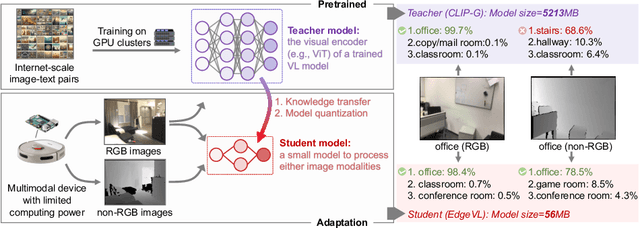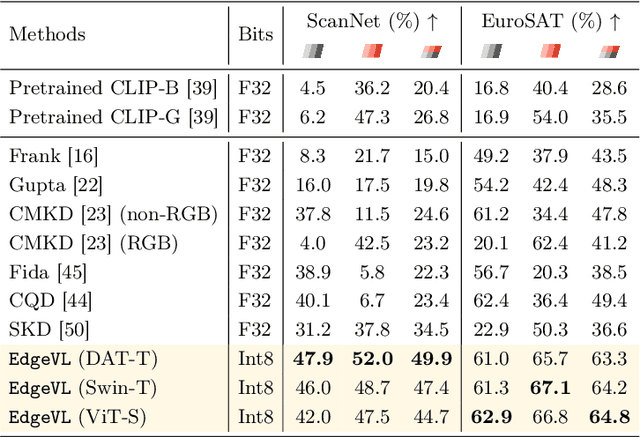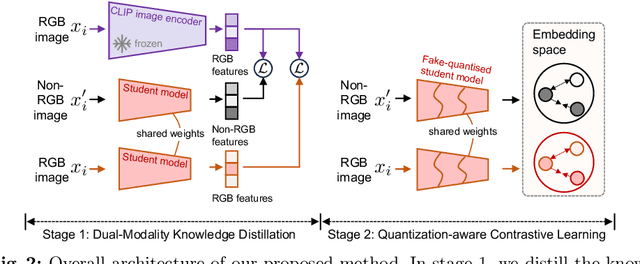Charles Fleming
ConQuER: Modular Architectures for Control and Bias Mitigation in IQP Quantum Generative Models
Sep 26, 2025Abstract:Quantum generative models based on instantaneous quantum polynomial (IQP) circuits show great promise in learning complex distributions while maintaining classical trainability. However, current implementations suffer from two key limitations: lack of controllability over generated outputs and severe generation bias towards certain expected patterns. We present a Controllable Quantum Generative Framework, ConQuER, which addresses both challenges through a modular circuit architecture. ConQuER embeds a lightweight controller circuit that can be directly combined with pre-trained IQP circuits to precisely control the output distribution without full retraining. Leveraging the advantages of IQP, our scheme enables precise control over properties such as the Hamming Weight distribution with minimal parameter and gate overhead. In addition, inspired by the controller design, we extend this modular approach through data-driven optimization to embed implicit control paths in the underlying IQP architecture, significantly reducing generation bias on structured datasets. ConQuER retains efficient classical training properties and high scalability. We experimentally validate ConQuER on multiple quantum state datasets, demonstrating its superior control accuracy and balanced generation performance, only with very low overhead cost over original IQP circuits. Our framework bridges the gap between the advantages of quantum computing and the practical needs of controllable generation modeling.
Command-V: Pasting LLM Behaviors via Activation Profiles
Jun 23, 2025Abstract:Retrofitting large language models (LLMs) with new behaviors typically requires full finetuning or distillation-costly steps that must be repeated for every architecture. In this work, we introduce Command-V, a backpropagation-free behavior transfer method that copies an existing residual activation adapter from a donor model and pastes its effect into a recipient model. Command-V profiles layer activations on a small prompt set, derives linear converters between corresponding layers, and applies the donor intervention in the recipient's activation space. This process does not require access to the original training data and needs minimal compute. In three case studies-safety-refusal enhancement, jailbreak facilitation, and automatic chain-of-thought reasoning--Command-V matches or exceeds the performance of direct finetuning while using orders of magnitude less compute. Our code and data are accessible at https://github.com/GithuBarry/Command-V/.
SOFT: Selective Data Obfuscation for Protecting LLM Fine-tuning against Membership Inference Attacks
Jun 12, 2025



Abstract:Large language models (LLMs) have achieved remarkable success and are widely adopted for diverse applications. However, fine-tuning these models often involves private or sensitive information, raising critical privacy concerns. In this work, we conduct the first comprehensive study evaluating the vulnerability of fine-tuned LLMs to membership inference attacks (MIAs). Our empirical analysis demonstrates that MIAs exploit the loss reduction during fine-tuning, making them highly effective in revealing membership information. These findings motivate the development of our defense. We propose SOFT (\textbf{S}elective data \textbf{O}bfuscation in LLM \textbf{F}ine-\textbf{T}uning), a novel defense technique that mitigates privacy leakage by leveraging influential data selection with an adjustable parameter to balance utility preservation and privacy protection. Our extensive experiments span six diverse domains and multiple LLM architectures and scales. Results show that SOFT effectively reduces privacy risks while maintaining competitive model performance, offering a practical and scalable solution to safeguard sensitive information in fine-tuned LLMs.
An Outlook on the Opportunities and Challenges of Multi-Agent AI Systems
May 23, 2025Abstract:Multi-agent AI systems (MAS) offer a promising framework for distributed intelligence, enabling collaborative reasoning, planning, and decision-making across autonomous agents. This paper provides a systematic outlook on the current opportunities and challenges of MAS, drawing insights from recent advances in large language models (LLMs), federated optimization, and human-AI interaction. We formalize key concepts including agent topology, coordination protocols, and shared objectives, and identify major risks such as dependency, misalignment, and vulnerabilities arising from training data overlap. Through a biologically inspired simulation and comprehensive theoretical framing, we highlight critical pathways for developing robust, scalable, and secure MAS in real-world settings.
Enhancing Dance-to-Music Generation via Negative Conditioning Latent Diffusion Model
Mar 28, 2025Abstract:Conditional diffusion models have gained increasing attention since their impressive results for cross-modal synthesis, where the strong alignment between conditioning input and generated output can be achieved by training a time-conditioned U-Net augmented with cross-attention mechanism. In this paper, we focus on the problem of generating music synchronized with rhythmic visual cues of the given dance video. Considering that bi-directional guidance is more beneficial for training a diffusion model, we propose to enhance the quality of generated music and its synchronization with dance videos by adopting both positive rhythmic information and negative ones (PN-Diffusion) as conditions, where a dual diffusion and reverse processes is devised. Specifically, to train a sequential multi-modal U-Net structure, PN-Diffusion consists of a noise prediction objective for positive conditioning and an additional noise prediction objective for negative conditioning. To accurately define and select both positive and negative conditioning, we ingeniously utilize temporal correlations in dance videos, capturing positive and negative rhythmic cues by playing them forward and backward, respectively. Through subjective and objective evaluations of input-output correspondence in terms of dance-music beat alignment and the quality of generated music, experimental results on the AIST++ and TikTok dance video datasets demonstrate that our model outperforms SOTA dance-to-music generation models.
ProDiF: Protecting Domain-Invariant Features to Secure Pre-Trained Models Against Extraction
Mar 17, 2025Abstract:Pre-trained models are valuable intellectual property, capturing both domain-specific and domain-invariant features within their weight spaces. However, model extraction attacks threaten these assets by enabling unauthorized source-domain inference and facilitating cross-domain transfer via the exploitation of domain-invariant features. In this work, we introduce **ProDiF**, a novel framework that leverages targeted weight space manipulation to secure pre-trained models against extraction attacks. **ProDiF** quantifies the transferability of filters and perturbs the weights of critical filters in unsecured memory, while preserving actual critical weights in a Trusted Execution Environment (TEE) for authorized users. A bi-level optimization further ensures resilience against adaptive fine-tuning attacks. Experimental results show that **ProDiF** reduces source-domain accuracy to near-random levels and decreases cross-domain transferability by 74.65\%, providing robust protection for pre-trained models. This work offers comprehensive protection for pre-trained DNN models and highlights the potential of weight space manipulation as a novel approach to model security.
Safeguarding Text-to-Image Generation via Inference-Time Prompt-Noise Optimization
Dec 05, 2024



Abstract:Text-to-Image (T2I) diffusion models are widely recognized for their ability to generate high-quality and diverse images based on text prompts. However, despite recent advances, these models are still prone to generating unsafe images containing sensitive or inappropriate content, which can be harmful to users. Current efforts to prevent inappropriate image generation for diffusion models are easy to bypass and vulnerable to adversarial attacks. How to ensure that T2I models align with specific safety goals remains a significant challenge. In this work, we propose a novel, training-free approach, called Prompt-Noise Optimization (PNO), to mitigate unsafe image generation. Our method introduces a novel optimization framework that leverages both the continuous prompt embedding and the injected noise trajectory in the sampling process to generate safe images. Extensive numerical results demonstrate that our framework achieves state-of-the-art performance in suppressing toxic image generations and demonstrates robustness to adversarial attacks, without needing to tune the model parameters. Furthermore, compared with existing methods, PNO uses comparable generation time while offering the best tradeoff between the conflicting goals of safe generation and prompt-image alignment.
Self-Adapting Large Visual-Language Models to Edge Devices across Visual Modalities
Mar 07, 2024



Abstract:Recent advancements in Vision-Language (VL) models have sparked interest in their deployment on edge devices, yet challenges in handling diverse visual modalities, manual annotation, and computational constraints remain. We introduce EdgeVL, a novel framework that bridges this gap by seamlessly integrating dual-modality knowledge distillation and quantization-aware contrastive learning. This approach enables the adaptation of large VL models, like CLIP, for efficient use with both RGB and non-RGB images on resource-limited devices without the need for manual annotations. EdgeVL not only transfers visual language alignment capabilities to compact models but also maintains feature quality post-quantization, significantly enhancing open-vocabulary classification performance across various visual modalities. Our work represents the first systematic effort to adapt large VL models for edge deployment, showcasing up to 15.4% accuracy improvements on multiple datasets and up to 93-fold reduction in model size.
Privacy Threats in Stable Diffusion Models
Nov 15, 2023Abstract:This paper introduces a novel approach to membership inference attacks (MIA) targeting stable diffusion computer vision models, specifically focusing on the highly sophisticated Stable Diffusion V2 by StabilityAI. MIAs aim to extract sensitive information about a model's training data, posing significant privacy concerns. Despite its advancements in image synthesis, our research reveals privacy vulnerabilities in the stable diffusion models' outputs. Exploiting this information, we devise a black-box MIA that only needs to query the victim model repeatedly. Our methodology involves observing the output of a stable diffusion model at different generative epochs and training a classification model to distinguish when a series of intermediates originated from a training sample or not. We propose numerous ways to measure the membership features and discuss what works best. The attack's efficacy is assessed using the ROC AUC method, demonstrating a 60\% success rate in inferring membership information. This paper contributes to the growing body of research on privacy and security in machine learning, highlighting the need for robust defenses against MIAs. Our findings prompt a reevaluation of the privacy implications of stable diffusion models, urging practitioners and developers to implement enhanced security measures to safeguard against such attacks.
Scale Invariant Privacy Preserving Video via Wavelet Decomposition
Nov 07, 2022Abstract:Video surveillance has become ubiquitous in the modern world. Mobile devices, surveillance cameras, and IoT devices, all can record video that can violate our privacy. One proposed solution for this is privacy-preserving video, which removes identifying information from the video as it is produced. Several algorithms for this have been proposed, but all of them suffer from scale issues: in order to sufficiently anonymize near-camera objects, distant objects become unidentifiable. In this paper, we propose a scale-invariant method, based on wavelet decomposition.
 Add to Chrome
Add to Chrome Add to Firefox
Add to Firefox Add to Edge
Add to Edge